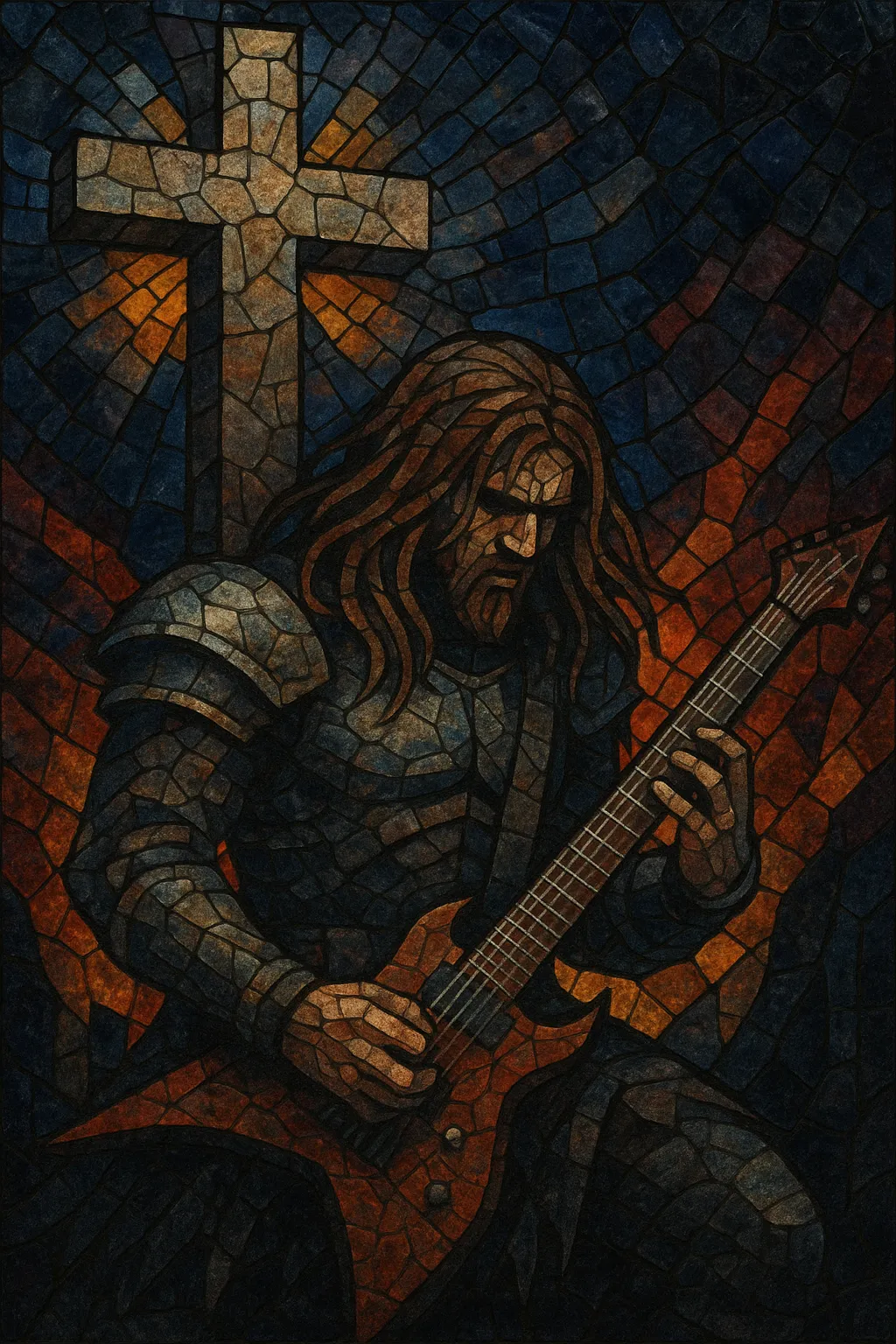
Christian metal (sometimes called "white metal") is a form of heavy metal defined primarily by its Christian lyrical content and worldview rather than by a single, unified sound.
Musically, it mirrors the broader metal spectrum: from classic and glam-influenced heavy metal, to thrash, power, doom, death, and metalcore. Expect high-gain guitar riffs, driving rhythm sections, and vocal approaches that range from soaring melodic hooks to harsh screams, depending on the substyle.
Lyrically, themes include faith, redemption, spiritual struggle, hope, social concerns approached from a Christian perspective, and occasionally direct scripture references or evangelistic messages. Scenes often coalesce around church-based venues, faith-oriented festivals, and dedicated labels, while many bands also operate in mainstream metal circuits.
Christian metal emerged at the intersection of the Jesus Music/Christian rock movement and the rising popularity of heavy metal. Early forerunners such as Resurrection Band (Rez) and Jerusalem brought heavier sounds into Christian contexts, paving the way for fully metal-identified acts. The genre reached a wider public in the mid-1980s with Stryper, whose glam-metal hooks, virtuosic leads, and overt faith-centered lyrics earned MTV rotation and chart success, normalizing Christian presence in mainstream metal.
The 1990s saw significant stylistic expansion. Bands like Tourniquet and Deliverance explored technical thrash and progressive elements; Mortification pushed into death/thrash, while Whitecross, Bride, Barren Cross, and Narnia covered glam, heavy, and power-metal veins. The growth of Christian-focused labels and festivals (e.g., Tooth & Nail’s Solid State imprint, Cornerstone Festival) provided infrastructure for touring, distribution, and community-building.
In the 2000s, a wave of Christian metalcore and related styles (e.g., Underoath, As I Lay Dying, Demon Hunter, August Burns Red) achieved substantial crossover visibility, chart presence, and placement on major tours. These bands balanced intense modern production, breakdowns, and harsh/clean vocal dynamics with lyrics that ranged from explicitly devotional to more subtle, introspective expressions of faith. Increased visibility also brought scrutiny and debates within both Christian and secular audiences regarding authenticity, messaging, and scene boundaries.
The genre now exists as a global tapestry, with active scenes across the Americas, Europe, and parts of Asia and Oceania. Streaming platforms lowered barriers to entry and broadened audiences. While some acts keep overt evangelistic lyrics, many others employ metaphor and personal narrative. Christian metal remains musically diverse, spanning traditional heavy styles through modern extreme subgenres, while navigating changing industry models and evolving faith communities.
Use two high-gain electric guitars, electric bass, and a powerful drum kit. For classic/heavy or glam-leaning songs, employ bright, saturated lead tones and tight rhythm chugs. For thrash/power, increase tempo, palm-muted alternate picking, and double-kick patterns. For modern metalcore/death-influenced tracks, consider lower tunings, extended-range guitars, aggressive gating, and punchy, sample-reinforced drums.
Favor minor keys (Aeolian, Phrygian) and modal color tones. Build songs around memorable, motif-driven riffs and power-chord movement, with melodic lead lines or twin-guitar harmonies for hooks. Solos often blend pentatonic vocabulary with modal runs. Typical structures include verse–pre-chorus–chorus with a contrasting bridge or breakdown; progressive or extreme variants may employ tempo shifts, metric modulation, or extended forms.
Set tempos anywhere from mid-paced groove to high-speed thrash. Double-kick and syncopated accents are common, while breakdowns and half-time feels suit metalcore. Vocals range from clean, melodic choruses (supporting sing-along, hope-forward refrains) to harsh screams/growls (expressing struggle, urgency). Layer gang vocals or harmonies for anthemic impact where appropriate.
Write from a Christian worldview with themes of faith, redemption, spiritual warfare, and compassion. Balance clarity with artistry: allegory and narrative often broaden appeal without diluting message. Scriptural allusions can be powerful, but avoid didactic phrasing that disrupts flow. Address personal doubts and societal issues honestly while resolving toward hope.
Aim for tight, modern production: multi-tracked rhythm guitars, focused low end, and defined drum transients. Use parallel compression on drums, multi-band control on guitars, and clear vocal placement. In heavier substyles, leave headroom for impactful breakdowns; in power/prog contexts, highlight melodic leads and dynamic contrasts. Master for clarity and punch, ensuring lyrics remain intelligible amid dense instrumentation.

